Join us at the International Thermal Conductivity Conference (ITCC) and the International Thermal Expansion Symposium (ITES).
February 16, 2024
May 4, 2021
September 26, 2019
May 25, 2021
October 30, 2019

September 29, 2023
Heat transfer fluids (HTFs) are liquids designed to store thermal energy and regulate heat flow. HTFs play a crucial role in various applications, where they help regulate temperatures and ensure the safe operation of critical components. During operation, an engine generates significant heat that needs to be dissipated. Heat transfer fluids (HTFs) efficiently carry heat away from critical areas such as engine blocks. The heat transfer efficiency of HTFs in these applications depends significantly on their thermal conductivity and heat transport properties. Some common examples of HTFs are water, oil, and ethylene glycol.
The most common use of HTFs encountered daily is in automobiles. Automobiles require constant maintenance to increase their performance and reduce their environmental impact. Cars have different categories of fluids for various sub-systems that should be kept clean and above a level to extend the vehicle’s life, for driver’s safety, and to keep the exhaust emissions at low levels. HTFs used in automobiles include motor oil, engine coolant, transmission fluid, brake fluid, and differential fluid. Several high-temperature fluids (HTFs) commonly used in a regular car are illustrated in Figure 1.
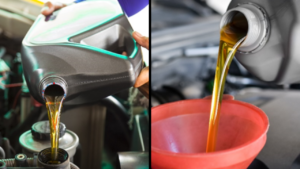
Figure 1. Picture of HTFs used in Automobiles
Beyond automobiles, HTFs have a wide variety of applications in various industries. From extracting energy from solar panels to transporting thermal energy in HVACs, HTFs are prevalent in many applications. The report states that the market valued heat transfer fluids at USD 10.7 billion in 2022 [1]. Their usage is expected to increase due to their significant role in enhancing next-generation concentrated solar panels (CSP) efficiency, the growing demand for HVACs in the Asia Pacific region, and the increasing natural gas production in Gulf countries.
The applications of HTFs with their corresponding market size are outlined in Figure 2. The key application areas include oil and gas, chemicals and synthetic plastic manufacturing, heating, ventilation and air conditioning (HVAC) systems, pharmaceuticals, concentrated solar panels (CSP) and the food & beverage industry. HTFs are primarily formulated using base fluids such as Glycols, Mineral oils, Silicone fluids, molten salts, alkylated aromatic, and aliphatic oils.
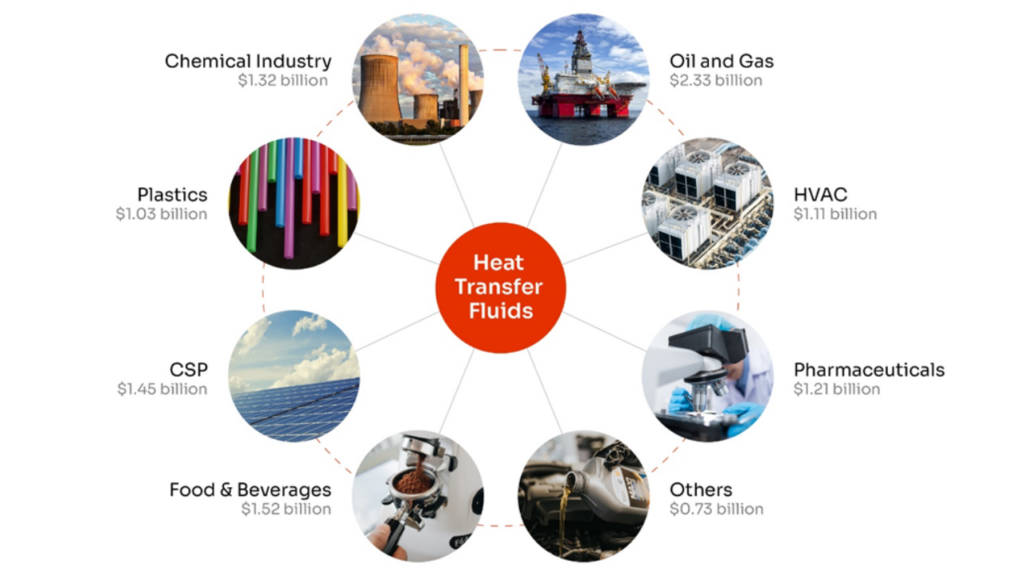
Figure 2. HTF market size in 2022.
HTFs are also common in energy applications. Further information on the scope of the HTF application can be found here: TC of HTFs using THW.
Applications that involve HTFs rely on the principle of heat transfer across a system using fluids. HTFs are designed to facilitate efficient thermal energy transfer within various systems and processes. In liquids, convection, characterized by the combination of advection and diffusion, is considered the dominant heat transfer mechanism. However, the significance of conduction should not be underestimated due to the following reasons:
The applicability of HTFs in a specific application depends on two classes of parameters. Density, viscosity, thermal conductivity, heat capacity and vapour pressure are critical properties of HTFs designed to achieve precision heating/cooling. The heat transfer coefficient (HTC) describes the overall efficiency of heat transfer. In transient heat conduction, HTC can be expressed as 
*Are you ready to optimize thermal management processes with accurate HTF testing? Contact us today to get started.
Thermal conductivity is the property of a material to conduct heat. It measures the ability of a material to transfer thermal energy through conduction. TC is expressed in units of W/m·K. The transient hot wire (THW) method is the most accurate and suitable technique for liquid thermal conductivity measurements. The THW method adheres to ASTM D7896-19 standard with distinct advantages such as eliminating natural convection effects, rapid measurement capabilities, and a simplified experimental design. These advantages make THW the most suitable approach for precisely measuring thermal conductivity in HTFs.
In the THW method, a thin Platinum (L-1) or Alumet (L-2) wire of ~0.1mm thickness and 40-60 mm length is fully immersed into the liquid. The liquid specimen is contained in a sampling cell. The sensor assembly with wire is displayed in Figure 3. A short electric pulse (1 second) is passed to heat the liquid in the cell. The temperature rise is measured as a function of time. In the THW-L1, the Platinum wire functions simultaneously as a line source supplying constant heat flux and as a resistance temperature detector (RTD) to measure temperature changes with time. In the case of THW-L2, a separate Pt100 RTD is used to measure the temperature variation in the liquid medium.
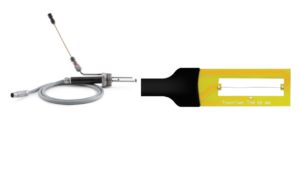
Figure 3. THW-L1 and THW-L2 Sensor
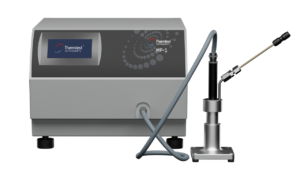
Figure 4. THW with MP-1.
For testing, the THW-L1 sensor is used with an integrated temperature platform. This setup enables precise thermal conductivity measurements in the temperature range of 10 to 200°C (The temperature range can be further expanded to -150 to 300 °C utilizing L1S and L1E). The sensor interfaces with Thermtest’s proprietary Measurement Platform (MP-1) for data acquisition and analysis, as shown in Figure 4. The temperature rise is limited to 2-4 °C using the automatic power detection feature included in the Thermtest’s proprietary algorithm.
*Discover the power of Thermtest’s measurement instruments for precise thermal conductivity measurements, even with nanofluids. Contact our sales team for instrument details.
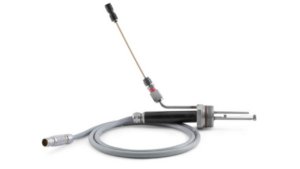
Step 1. Open the cell and remove the sensor. Place the cell in the vertical cell mount.
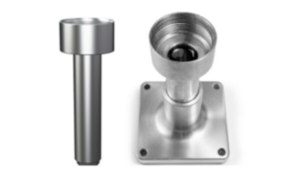
Step 2. Fill the cell with around 20 ml of fluid.
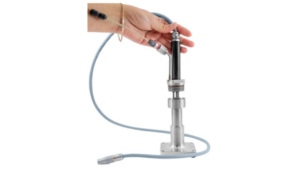
Step 3. Close the cell with the sensor inside.

Step 4. Insert the cell and sensor assembly into the MP-1.
Water is the common liquid and solvent available for testing and implementation. It is also a reference fluid for calibrating a thermal conductivity device. Ethylene Glycol is also frequently used as a solvent, with a boiling point higher than water (197.16°C) and higher viscosity (20.855 mPa-s). The thermal conductivity and diffusivity of the above fluids are measured using THW-L1, and the results are illustrated in Figure 6. The measured results are compared with the reference values [2], and the deviations are between 1-2%.
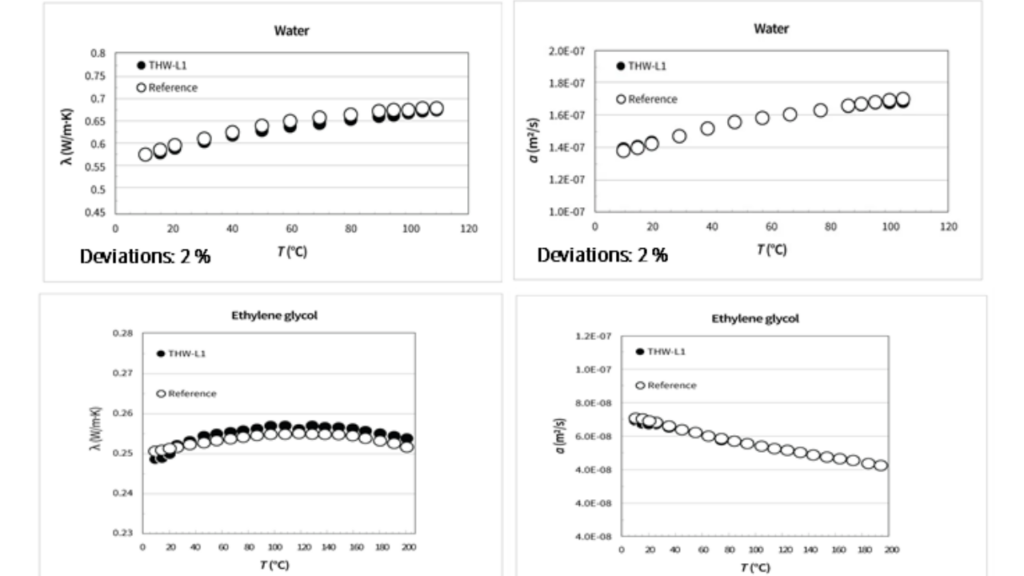
Figure 5. Thermal Conductivity and Thermal Diffusivity measurements of water and ethylene glycol (reference fluids). The results are compared with the standard reference values [2].
Thermal Conductivities of automobiles’ vital heat transfer fluids (HTFs): motor oil 10W-30 and transmission oil are measured. These fluids play a crucial role as both lubricants and coolants in automobiles. They keep the respective sub-systems (engine and transmission) clean and facilitate efficient heat transfer from components such as valves, pistons, bearings, and gears within engine and transmission systems.
The thermal transport properties of both 10W-30 motor oil and transmission oil are measured using THW-L1 in the temperature range of -40 to 150°C, with measurements taken at 10°C intervals. Both HTFs in this test have similar thermal transport properties and exhibit parallel trends with temperature variation, as shown in Figure 7. The results indicate that as the testing temperature increases from -40°C to ambient temperature, the thermal conductivity of the HTF exhibits around 10% reduction. The thermal conductivity decreases by a further 10% as the oil heats up to 150°C.
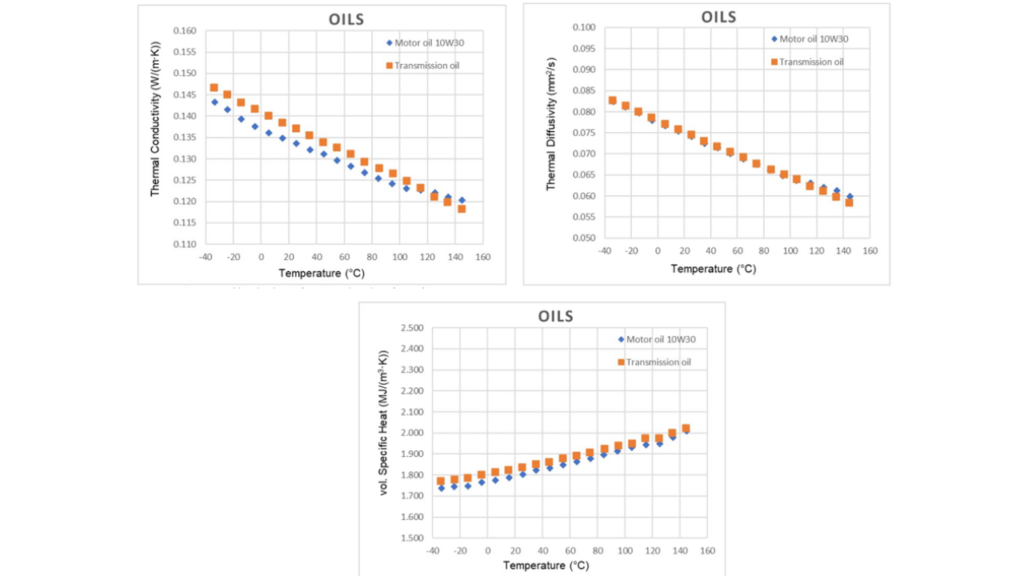
Figure 6. Thermal Conductivity, Thermal Diffusivity and Volumetric Heat Capacity of automotive fluids were measured using THW-L1.
All the above commonly used HTFs, namely water, ethylene glycol and engine oils, are not valuable for miniature cooling or rapid thermal transfer applications because HTFs usually have low thermal conductivities, as illustrated in Figure 7(a). To enable efficient heat transfer, nanoparticles of high thermal conductivity materials are introduced in dilute concentrations into the HTFs. For example, the microstructure of nanofluids formed by introducing gold nanoparticles (AuNPs) and graphene nanoplatelets (GNs) is illustrated in Figure 7(b).
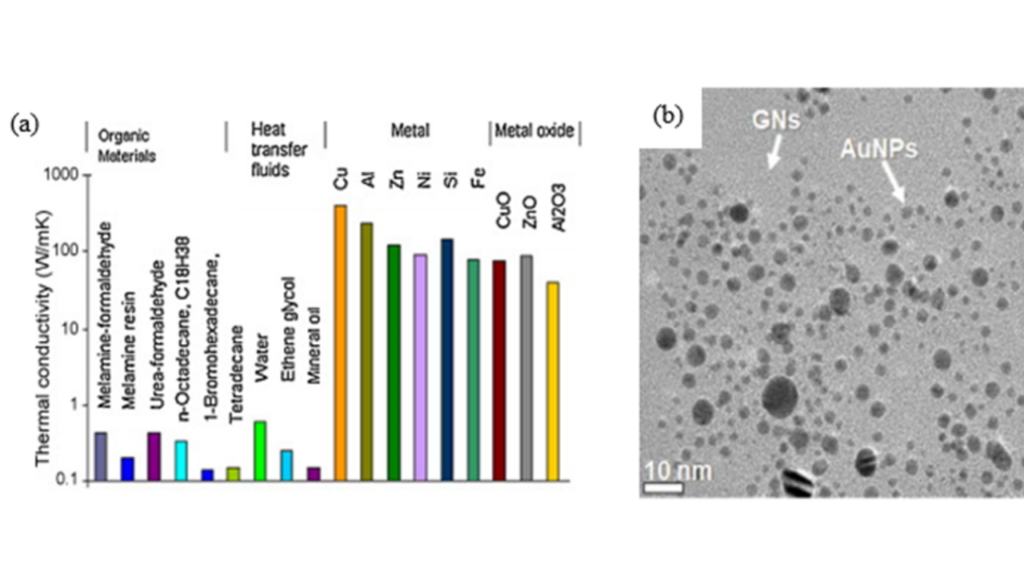
Figure 7. (a) Thermal Conductivity of HTFs compared to organic materials, metals and oxides [3] (b) Gold nanoparticles (AuNPs) decorated graphene nanosheets (GNs) based nanofluids [4].
When efficiently dispersed, Nanofluids enable rapid thermal management with improved thermal performance. Nanofluids also eliminate erosion, sedimentation and clogging that plagued earlier solid-liquid mixtures with larger particles [5]. Aside from improving thermal conductivity, introducing nanoparticles into the fluid alters viscosity and surface properties [3].
Nanofluids can be prepared using a) Single-step process or direct evaporation method or b) Two-step process. In the two-step process, nanoparticles are initially synthesized using an inert gas condensation process. The synthesized nanoparticles are dispersed into the base fluid in the next step. In a single-step process, inert gas condensation and particle dispersion co-occur. The base liquid should have low vapour pressure to prevent base liquid evaporation during inert gas condensation in a single-step process. Figure 8 below illustrates the nanofluids prepared by dispersing powders of conducting materials such as copper, aluminum oxide and carbon black in transmission fluid using a two-step process.
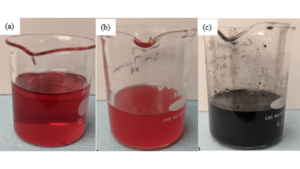
Figure 8. Nanofluids prepared using two step process. (a) Copper powder 0.1% w/w dispersed in Transmission oil (b) Aluminum oxide 0.1% w/w dispersed in Transmission oil (c) Carbon 0.5 % w/w dispersed in Transmission oil.
The thermal conductivity of nanofluids measured using THW-L1 after different time intervals of dispersion is displayed in Figure 10. The thermal conductivity of nanofluids is influenced by the thermal conductivity, concentration, size, and morphology of nanoparticles.
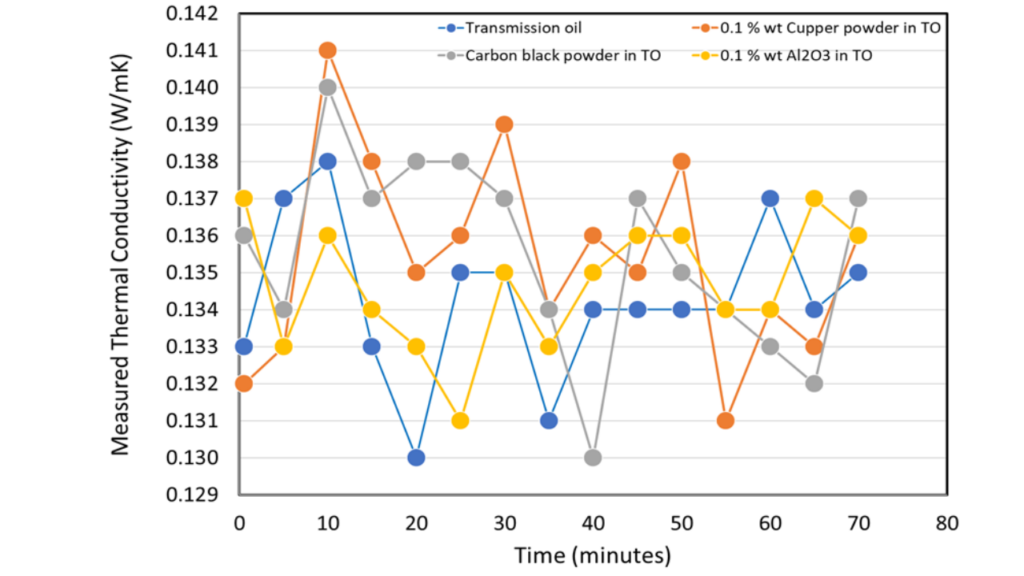
Figure 9. The thermal conductivity of nanofluids.
In this article, the significance of HTFs across various industries is illustrated, emphasizing the critical role of HTFs in temperature regulation and heat dissipation. The focus has been on the importance of measuring the thermal conductivity of HTFs, introducing the most suitable THW method for measuring liquid thermal conductivity. A comprehensive description of the measurement process is provided with several testing results, including reference materials like water and ethylene glycol and automotive fluids like motor oil and transmission oil.
Furthermore, advanced HTFs known as nanofluids are introduced. Preparation and testing of different nanofluids is demonstrated. In conclusion, this article highlights that using Thermtest’s THW-L1 in combination with MP-1 delivers highly accurate measurements, even when dealing with nanofluids. THW-L1 is invaluable for industries that rely on efficient heat transfer methods in fluids.
Unlock unparalleled efficiency with our cutting-edge HTF testing and innovative instruments. Contact our experts now to take your thermal management to the next level!
[1] “Heat Transfer Fluids Market Size and Share Report, 2030” [Online]. Available: https://www.grandviewresearch.com/industry-analysis/heat-transfer-fluids-market. [Accessed: 29-Aug-2023].
[2] Lemmon, E. W., Bell, I. H., Huber, M. L., and McLinden, M. O., 2018, “NIST Standard Reference Database 23: Reference Fluid Thermodynamic and Transport Properties-REFPROP.”
[3] Wen, D., Lin, G., Vafaei, S., and Zhang, K., 2009, “Review of Nanofluids for Heat Transfer Applications,” Particuology, 7(2), pp. 141–150.
[4] Mbambo, M. C., Madito, M. J., Khamliche, T., Mtshali, C. B., Khumalo, Z. M., Madiba, I. G., Mothudi, B. M., and Maaza, M., 2020, “Thermal Conductivity Enhancement in Gold Decorated Graphene Nanosheets in Ethylene Glycol Based Nanofluid,” Sci Rep, 10(1), p. 14730.
[5] “A Benchmark Study on the Thermal Conductivity of Nanofluids | Journal of Applied Physics |AIP Publishing” [Online]. Available: https://pubs.aip.org/aip/jap/article-abstract/106/9/094312/283705/A-benchmark-study-on-the-thermal-conductivity-of?redirectedFrom=fulltext. [Accessed: 24-Aug-2023].
———–Written by: Dr. Jagannadh Sripada, Application Scientist